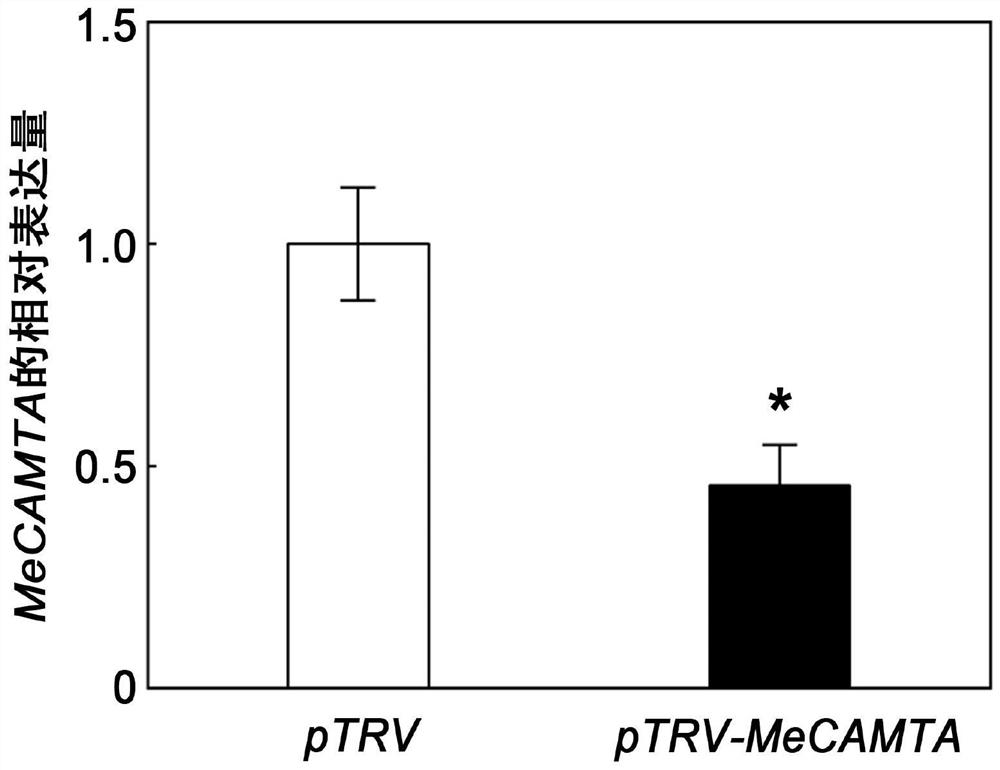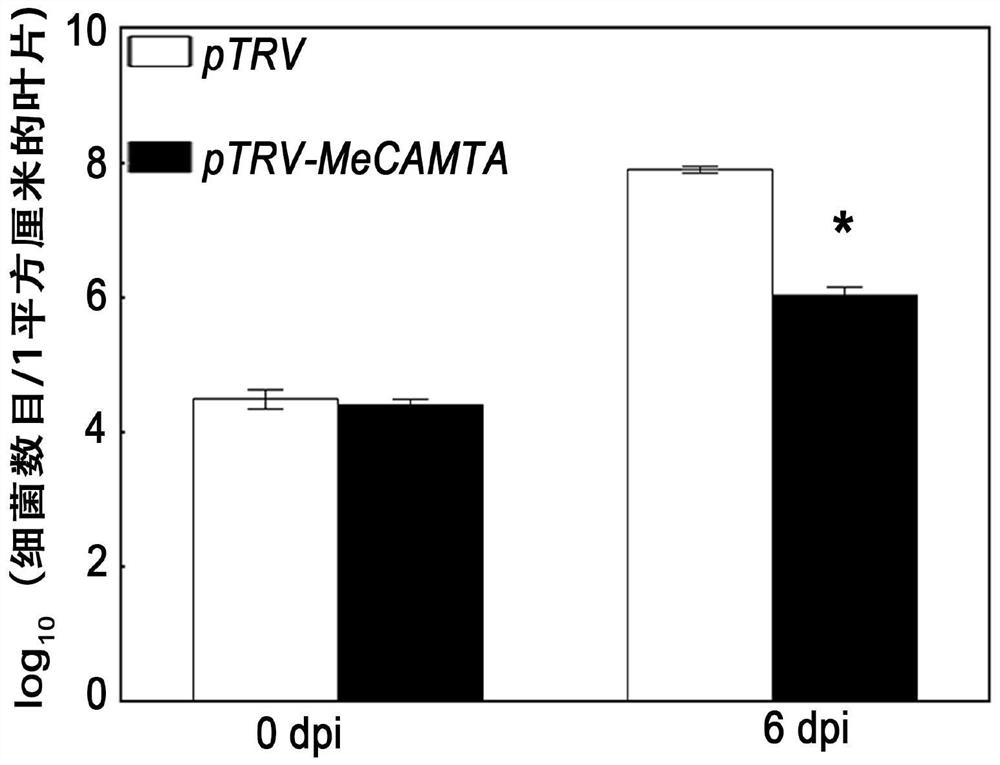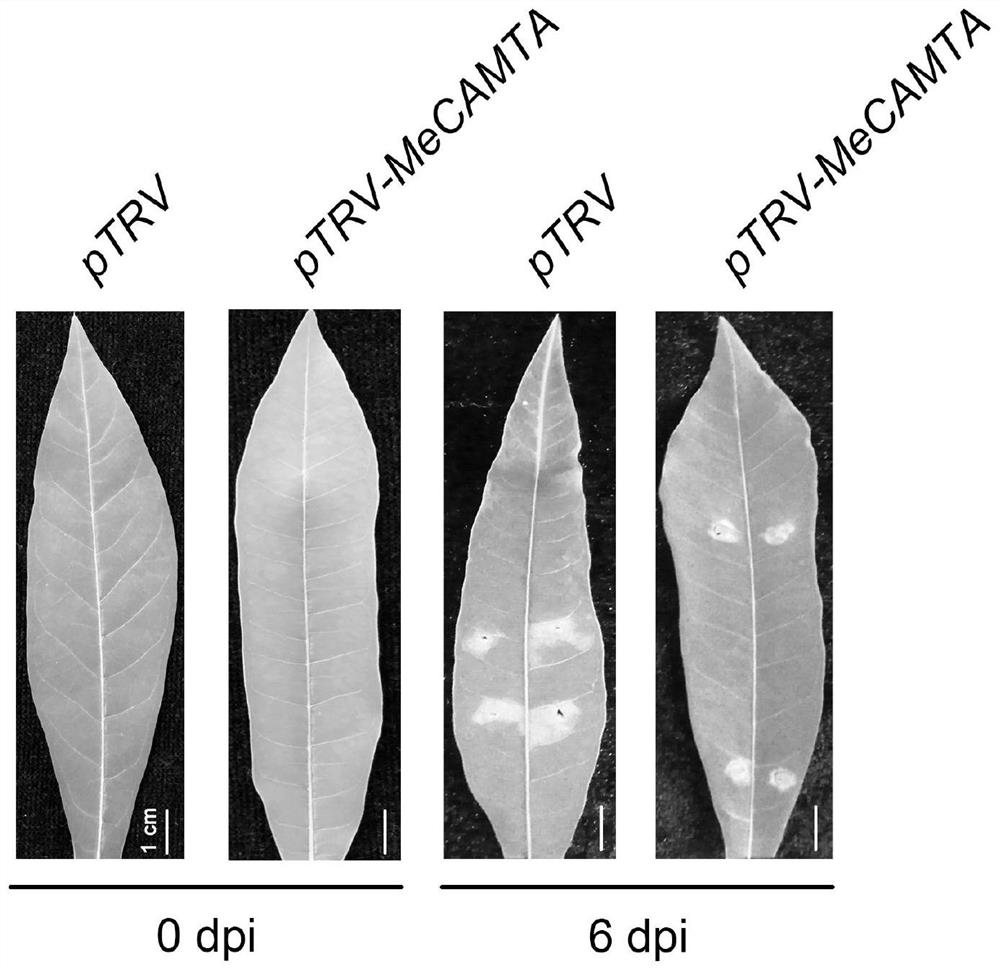Construction and disease-resistant application of a cassava camta gene and its inhibitory expression vector
A cassava, carrier technology, applied in the application, genetic engineering, plant genetic improvement and other directions, can solve the problem that functional research has not yet been reported, and achieve the effect of fast and efficient silencing
- Summary
- Abstract
- Description
- Claims
- Application Information
AI Technical Summary
Problems solved by technology
Method used
Image
Examples
Embodiment 1
[0024] Example 1: Cassava MeCAMTA Construction of gene expression silencing vector
[0025] (1) Cassava MeCAMTA Cloning of specific nucleic acid silencing fragments from 1-600 bp at the 5' end of the gene:
[0026] Take an appropriate amount of cassava leaves of Huanan No. 124 and put them in a mortar cooled by liquid nitrogen, add an appropriate amount of liquid nitrogen, and grind the cassava leaves into a fine powder. Root Biochemical Co., Ltd., the same below), extracted total RNA from cassava. The absorbance value of RNA at 260 nm and 280 nm and the RNA concentration were measured with a protein detector (DM 650 BECKMAN, MSA), and the RNA purity was detected by 1.5% (mass volume ratio) agarose gel electrophoresis. According to the instructions of the reverse transcription kit (purchased from Thermo Fermentas, the same below), the RNA was reverse transcribed into cDNA and stored in a -40°C refrigerator for later use.
[0027] By designing primers, we cloned cassava f...
Embodiment 2
[0032] Example 2: pTRV2- MeCAMTA Application of gene silencing expression vector in cassava disease resistance
[0033] (1) Preparation of cassava materials:
[0034] A. Seed selection: Varieties with good adaptability and high yield should be selected, and Huanan 124 should be selected for planting. Generally, it is better to choose cassava stems with fully mature stems, corked, dense stems, complete epidermis and axillary buds, thick and obvious bud eyes, no pests and diseases, no damage, fresh and firm middle and lower parts of the main stem. Old and young stems should be avoided.
PUM
 Login to View More
Login to View More Abstract
Description
Claims
Application Information
 Login to View More
Login to View More - R&D
- Intellectual Property
- Life Sciences
- Materials
- Tech Scout
- Unparalleled Data Quality
- Higher Quality Content
- 60% Fewer Hallucinations
Browse by: Latest US Patents, China's latest patents, Technical Efficacy Thesaurus, Application Domain, Technology Topic, Popular Technical Reports.
© 2025 PatSnap. All rights reserved.Legal|Privacy policy|Modern Slavery Act Transparency Statement|Sitemap|About US| Contact US: help@patsnap.com



